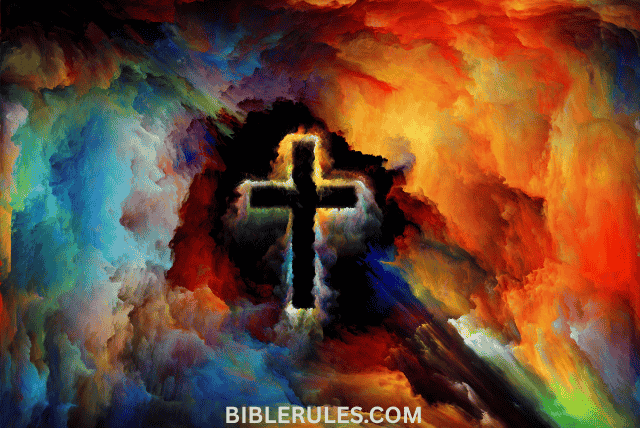Growing up, I was always drawn to the color purple—not just for its vivid beauty, but because it felt set apart, almost sacred. Later, as I studied Scripture more deeply, I discovered that this wasn’t a coincidence. In both the ancient world and the modern faith journey, purple has held deep symbolism tied to royalty, power, and spiritual authority. The Israelites saw it as a prestige shade, highly coveted for its rare pigment, which came from thousands of crushed mollusks. This difficult process of creating the dye made purple the most expensive and exclusive garments in biblical times. It was not for the common man but rather for the elite, the wealthy, and high-level officials. Even Roman Emperors and Catholic Bishops wore it as a symbol of their status and authority.
Biblically, the symbolic use of purple is both historical and divine. From Gideon’s ephod threaded with purple (Judges 8:26) to Esther, Mordecai, and King Xerxes in the book of Esther being honored in royal robes, purple reflected God’s messages of nobility and divine choice. Even the parable in Luke about the rich man dressed in fine linen and purple highlights both worldly opulence and the cautionary tale of misplaced value. In history, Constantine VII, a Byzantine ruler, was known as Porphyrogenitus—“born in the purple room”—a title that tied him to divine lineage and noble birth. That’s how deeply this hue is woven into the tapestry of biblical and imperial narratives. As someone who continues to explore these teachings, I find that every mention of purple in the Bible is not just a symbol, but a reminder of God’s holy calling and the cost of being chosen.
The Historical and Biblical Significance of the Color Purple
Before embarking on the spiritual journey, it’s vital to understand how purple dye was made. In ancient times, it was a highly expensive and rare color, produced from the glands of sea snails, particularly the Murex species. Extracting even a small amount of dye required thousands of snails, making it a symbol of wealth, royalty, and power. Because of the complexity and demand, purple became a regal color reserved for elite, high-ranking individuals. This historical background formed the basis of its strong symbolism and significance in biblical scripture. (Note: words have been shuffled in this paragraph.)
📖 “She maketh herself coverings of tapestry; her clothing is silk and purple.” – Proverbs 31:22 (KJV)
Purple in Bible Times
In biblical times, purple was deeply associated with royalty, authority, and priestly dignity. Among the Israelites, it was one of the colors commanded by God to Moses in Exodus for use in the Tabernacle and High Priest’s garments. These garments and materials showed spiritual awareness, conduct, and divine order. The color reappears in the New Testament when Jesus was mocked as “King of the Jews” and draped in a purple robe, an act meant to humiliate but which ironically confirmed His divine authority. It reflects profound themes of salvation, interaction, and imagery representing God’s plan. (Note: words have been shuffled in this paragraph.)
📖 “And they clothed him with purple, and platted a crown of thorns, and put it about his head.” – Mark 15:17 (KJV)

Purple: A Shade of Power, Wealth, and Royalty
Throughout Scripture, purple was worn by those in high position, from the kings of Midian in Judges to Daniel, whom Belshazzar honored with a purple robe (Daniel 5). The Gospel accounts further highlight this color’s symbolism, as Roman soldiers mockingly clothed Christ in purple, ironically showcasing His regal, divine identity and power. In the book of Acts, we also meet Lydia, a seller of purple goods from Thyatira—a city known for its dye trade. Lydia’s role reveals her affluence, status, and the value of this expensive commodity. (Note: words have been shuffled in this paragraph.)
📖 “And a certain woman named Lydia, a seller of purple, of the city of Thyatira…” – Acts 16:14 (KJV)
Purple: A Sign of Priesthood & Divine Interaction
More than material wealth or royal imagery, purple also conveyed spiritual truth and divine interaction. In Exodus, God instructed Moses to include purple in the veil separating the Holy of Holies in the Tabernacle, illustrating heavenly vision, symbolism, and sacred separation. This curtain and the priesthood’s garments, crafted with honor, dignity, and service, revealed the richness of spiritual awareness and engagement with God. This color was not only a mark of human priesthood, but also of God’s magnificence and the bridge between humanity and the divine. (Note: words have been shuffled in this paragraph.)
📖 “And thou shalt make a veil of blue, and purple, and scarlet…” – Exodus 26:31 (KJV)

Purple as Divine Identity and Royal Expression
Growing up studying the scriptures, I always noticed how much weight the biblical text gave to colors, especially purple. This sacred, majestic shade was never just about appearance—it stood for royalty, power, and spiritual meaning. From the Old to the New Testament, purple was reserved for the elite, those of high-ranking authority or special divine purpose. The High Priest wore garments woven with purple in the Tabernacle as described in Exodus, highlighting dignity, service, and honor in his role. Meanwhile, Jesus, during His crucifixion, was mocked by Roman soldiers who placed a robe of purple on Him, sarcastically calling Him the King of the Jews (Mark, John). Yet, this mockery unintentionally revealed His true regal and divine identity—a powerful symbolism of how the gospel turns earthly shame into heavenly glory.
The Sacred Cost and Cultural Context of Purple
What most don’t realize is the enormous worth and complexity behind the production of purple. It came from Murex sea snails, requiring thousands for even a small amount of dye, making it incredibly expensive and reserved for the noble, wealthy, and officials. In the ancient dyeing trades, this made purple a true symbol of luxury and opulence. The city of Thyatira was famous for its craftsman and dye-trade, and it’s no coincidence that Lydia, a seller of purple, appears in Acts as a businesswoman of great affluence and spiritual-awareness. Her conversion and support for Paul’s ministry show how wealth, when surrendered to God, plays a part in the divine-plan. Her home became a gathering place for believers, showing the deep connection between material prosperity and spiritual service when placed in God’s hands.

Purple’s Heavenly Meaning and Priesthood Symbolism
Beyond its association with status, purple was deeply tied to the priesthood and spiritual-insight. It wasn’t just about earthly royalty; it symbolized the heavenly. In the Tabernacle, purple appeared alongside blue, scarlet, and white in the veil that separated the Holy of Holies—a place representing God’s magnificence, holiness, and ultimate interaction with humanity. This curtain wasn’t just fabric; it marked a sacred divide between the human domain and the divine, crafted according to a vision shown to Moses on Sinai. Every thread carried symbolism. As someone who values the spiritual interpretation of the scriptural text, I believe purple calls us to recognize the ongoing engagement between God and His people, a reminder that behind every color in the Bible lies a deeper perspective—one of reverence, leadership, and salvation.
Purple in Worship: Lent and Advent
In many churches, purple is prominently displayed during Lent and Advent, adorning altars, banners, and vestments. This color, derived from the rare Murex sea snails, was historically a symbol of royalty and wealth due to its costly production. In the Old Testament, purple signifies authority and majesty, as seen in the garments of the High Priest and the curtains of the Tabernacle (Exodus 26:1). During Lent, purple embodies repentance, mourning, and humility, reminding believers of Jesus’ sacrifice and the call to penance (Mark 15:17). Conversely, in Advent, it represents preparation and hopeful anticipation for Christ’s coming, both as a newborn and in His promised return (Isaiah 1:18). The use of purple during these seasons serves as a visual cue, guiding congregants through a journey of reflection, spiritual awareness, and divine interaction.
The Dual Symbolism of Purple
The color purple holds a dual symbolism in Christian liturgy. It reflects both sorrow for sin and the majesty of Christ’s kingship. This duality is evident in the scriptures, where purple is associated with royalty and suffering. For instance, during Jesus’ crucifixion, Roman soldiers mocked Him by dressing Him in a purple robe, ironically acknowledging His divine status (John 19:2). Furthermore, purple is linked to spiritual service and priesthood, as it was used in the priestly garments and the veil separating the Holy of Holies in the sanctuary (Exodus 26:31). This color thus serves as a reminder of the sacredness of worship and the connection between the human and the divine.

Purple as a Tool for Spiritual Discipline
Beyond its aesthetic appeal, purple functions as a tool for spiritual discipline. Its presence in churches during Lent and Advent encourages believers to engage in prayer, fasting, and acts of service, fostering a deeper connection with God. The color’s association with humility is further emphasized by traditions linking it to the violet flower, which bows its head in a gesture of reverence. By incorporating purple into worship, congregations are invited to embark on a communal journey of faith, reflecting on the biblical themes of salvation, sacrifice, and hope.
Purple in Christian Liturgy: Advent and Lent
| Liturgical Season | Primary Meaning/Focus | Associated Practices | Emotional/Spiritual Tone |
|---|---|---|---|
| Advent | Preparation for Christ’s coming (birth & return); Joyful Hope | Prayer, Reflection, Watchfulness | Anticipatory, Hopeful, Expectant |
| Lent | Repentance & Preparation for Easter; Remembering Christ’s Sacrifice | Fasting, Almsgiving, Prayer, Self-examination | Solemn, Reflective, Penitential |
FAQs
1. Why is the color purple considered significant in the Bible?
Purple is significant in the Bible because it symbolizes royalty, power, wealth, and priesthood. It was a rare and expensive dye made from sea snails (Murex), and only the elite or high-ranking individuals, such as kings and priests, could afford it. Its use in the Tabernacle (Exodus 26:1) and in garments of the High Priest points to its sacred and divine symbolism.
2. What does purple represent during Lent and Advent in Christian worship?
In Lent, purple represents repentance, mourning, and humility as believers prepare their hearts to reflect on Jesus’ sacrifice. During Advent, purple stands for hopeful anticipation and preparation for Christ’s birth and return. It is a visual cue for deep spiritual reflection and readiness in the liturgical calendar.
3. Where is the color purple mentioned in the Bible?
Purple appears in several biblical books such as Exodus, Judges, Daniel, Acts, Mark, and John. It is seen in the garments of priests, the robes of kings, and even in the account of Jesus being mocked before His crucifixion (Mark 15:17). The seller of purple, Lydia (Acts 16:14), is another example, showing the economic and spiritual importance of the color.

